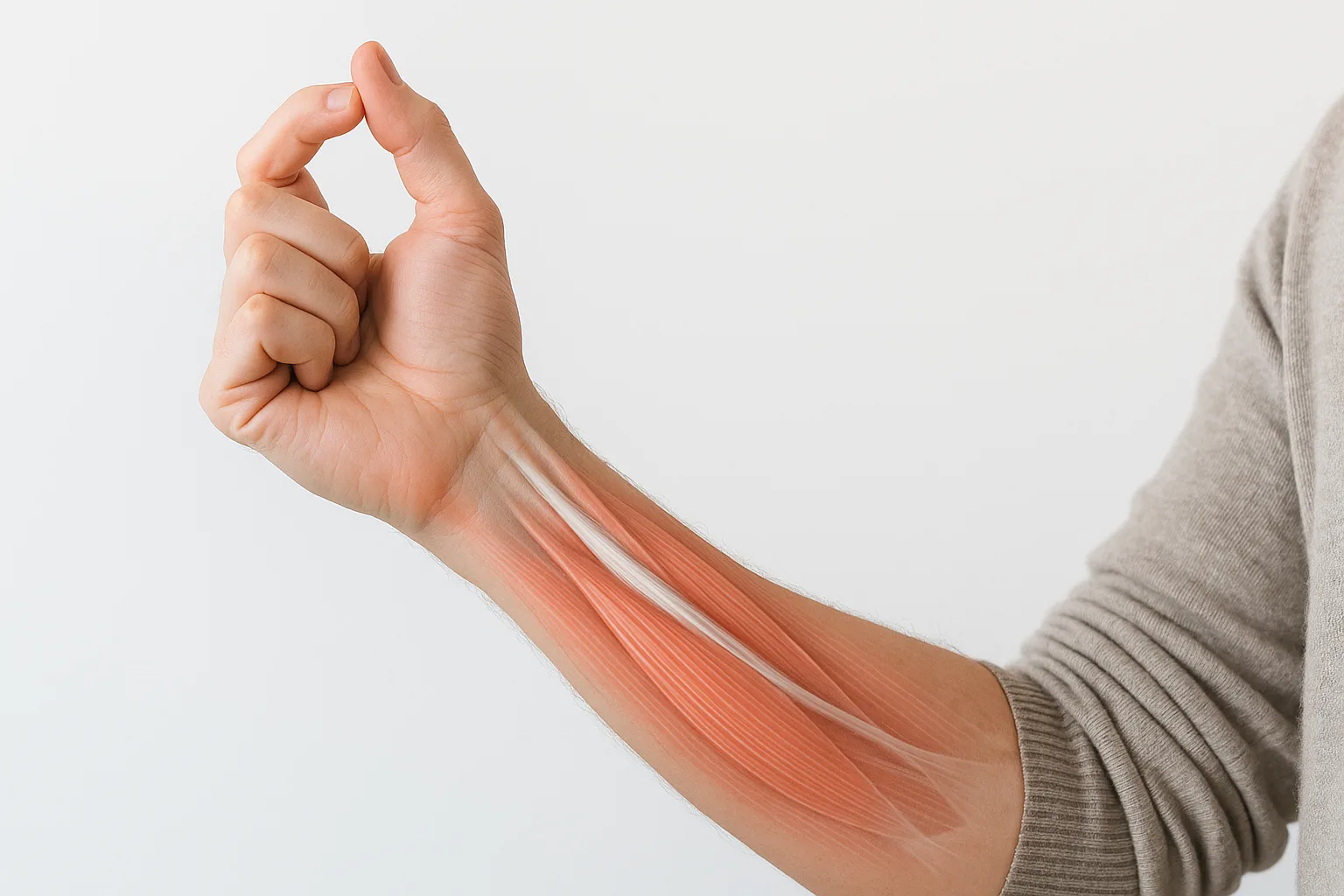You have a secret muscle hiding in your wrist — and about 15% of humans don’t have it at all.
It’s called the Palmaris Longus, a leftover from evolution that once helped our ancestors climb, grip, and survive.
Let’s find out if you have it — in under 10 seconds — and what it reveals about your evolutionary past.
Step 1 — The 10-Second Wrist Test
Place your arm on a table, palm facing up.
Now touch your thumb and pinky finger together, and slightly flex your wrist.
See a thin tendon pop up in the middle of your wrist?
That’s the Palmaris Longus.
If nothing appears — don’t panic. You’re not missing out on superpowers.
You’re just one of the humans who evolved beyond the need for it.
This tiny tendon doesn’t affect strength, dexterity, or grip at all.
It’s simply a biological souvenir from our primate ancestors.
Step 2 — What the Palmaris Longus Used to Do
In our evolutionary past, this muscle played a key role in gripping and climbing.
When ancient primates used their hands for swinging or grabbing branches, the Palmaris Longus helped stabilize the wrist.
As humans evolved and stopped climbing for survival, this tendon became functionally redundant.
Some people still have it — others don’t.
Doctors even joke that it’s a “bonus spare part” of evolution.
Step 3 — How Evolution Silently Edits You
Your DNA carries thousands of “leftovers” from previous versions of the human body — structures that once had a purpose but are now obsolete.
The Palmaris Longus is one of the clearest examples.
It’s not harmful, but it’s a clue that evolution is an editor, not a designer.
“Natural selection doesn’t delete old code — it comments it out,”
says Dr. Karen Berman, evolutionary biologist at NIH.
These vestigial structures show that change in biology happens by adaptation, not perfection.
Step 4 — Do You Have It on Both Arms?
Here’s where it gets weirder:
You might have the tendon on one arm but not the other.
Studies show asymmetric development in around 4% of humans — a perfect reminder that evolution doesn’t care about symmetry, only survival.
If one wrist shows it and the other doesn’t — congrats, you’re a walking example of genetic randomness.

Step 5 — Why Doctors Still Use It
Even though the Palmaris Longus is useless for movement, surgeons actually love it.
Why?
Because it’s the perfect donor tendon for reconstructive surgery.
If a patient needs a tendon replacement in the hand or face, doctors can remove the Palmaris Longus without affecting function at all.
It’s nature’s spare part — ready for recycling.
Step 6 — Other Leftovers You Still Carry
The Palmaris Longus isn’t alone. Your body is full of evolutionary souvenirs:
- Goosebumps: once helped early humans look bigger and retain heat.
- Wisdom teeth: tools for chewing raw roots and meat.
- Tailbone (coccyx): the last trace of our tail-bearing ancestors.
- Ear muscles: once used to swivel ears toward sound.
- Appendix: originally part of a plant-digesting system.
Each one is a small reminder: you’re carrying the history of life in your own tissue.
Step 7 — What This Says About You
Finding or not finding the tendon doesn’t make you more or less “evolved.”
It just shows how diverse human evolution really is.
If you can see it — it’s a cool party trick.
If you can’t — it’s proof of natural variation.
Either way, you’re a perfectly tuned piece of evolutionary art.
Call to Action
Want to test another evolutionary leftover?
Check out “The Tiny Hole Near Your Ear — Evolution’s Hidden Leftover.”
It’s a genetic feature found in only 5% of people worldwide.
